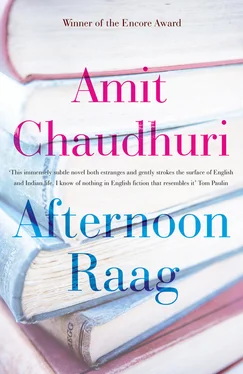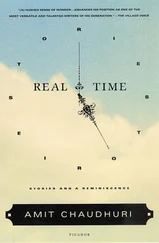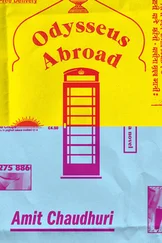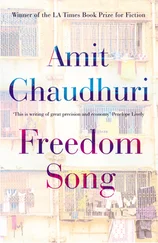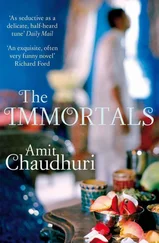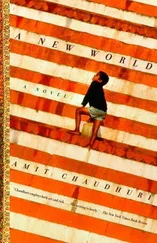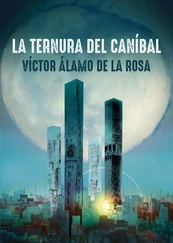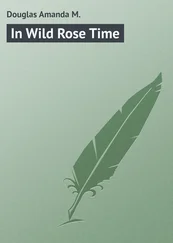Amit Chaudhuri - Afternoon Raag
Здесь есть возможность читать онлайн «Amit Chaudhuri - Afternoon Raag» весь текст электронной книги совершенно бесплатно (целиком полную версию без сокращений). В некоторых случаях можно слушать аудио, скачать через торрент в формате fb2 и присутствует краткое содержание. Год выпуска: 2015, Издательство: Oneworld Publications, Жанр: Современная проза, на английском языке. Описание произведения, (предисловие) а так же отзывы посетителей доступны на портале библиотеки ЛибКат.
- Название:Afternoon Raag
- Автор:
- Издательство:Oneworld Publications
- Жанр:
- Год:2015
- ISBN:нет данных
- Рейтинг книги:3 / 5. Голосов: 1
-
Избранное:Добавить в избранное
- Отзывы:
-
Ваша оценка:
- 60
- 1
- 2
- 3
- 4
- 5
Afternoon Raag: краткое содержание, описание и аннотация
Предлагаем к чтению аннотацию, описание, краткое содержание или предисловие (зависит от того, что написал сам автор книги «Afternoon Raag»). Если вы не нашли необходимую информацию о книге — напишите в комментариях, мы постараемся отыскать её.
Afternoon Raag — читать онлайн бесплатно полную книгу (весь текст) целиком
Ниже представлен текст книги, разбитый по страницам. Система сохранения места последней прочитанной страницы, позволяет с удобством читать онлайн бесплатно книгу «Afternoon Raag», без необходимости каждый раз заново искать на чём Вы остановились. Поставьте закладку, и сможете в любой момент перейти на страницу, на которой закончили чтение.
Интервал:
Закладка:
6
Sohanlal comes in the mornings. He is married to my music-teacher’s sister. Though he is quite short, he wears bright kurtas that come down below his knees. He demands the tablas from Ponchoo, strutting around the hall like a rooster in his early morning plumage. Then he tunes the smaller tabla with a hammer, and the bigger one on the left he booms with his fingertips. When he plays as my mother sings, his hands, which are old now, produce a pitter-patter noise. After twenty minutes, he takes a break, smoking a beedi on the veranda; and then, before he is finished, throws it away and coughs a dramatic smoker’s cough. He likes doing things; returning, he takes out his handkerchief and dusts the harmonium, wiping the smooth, rectangular top. It is a harmonium made in Calcutta by Pakrashi, and he takes care to probe, his forefinger shrouded with the handkerchief, each English letter of PAKRASHI carved largely on the wood, blowing sensuously on the angular K and tracing the curves of the P and the R till he is satisfied. Then he polishes the black and white keys, and opens the cover; inside, the two rows of innumerable reeds lie bone-white, each reed a delicate white splinter, with a pinhead on one end and a flat metal strip on the belly. Sohanlal blows quietly upon them, as if they were on fire; how silent music is as it rests in these reeds, white paper-thin wands! He replaces the cover, because it is almost unpleasant to watch, the inner nakedness of a harmonium. Eagerly, he moves about again, his spacious pyjamas billowing around him. As he prepares to sit, they open at the bottom like alligator-mouths that have swallowed up his legs. After an hour, he glances at his wristwatch and collects his money politely and hurries out of the front door. Then next morning he is reincarnated in his fantastic kurta and pyjamas as if from a magic lamp.
It was on an afternoon in August I bought my first tanpura. We were visiting Calcutta then, and my music-teacher, my guru, had come with us and was living in our house; he was going to sing at a ‘conference’. He would practise in the mornings, and take time off to vanish to the Kali temple, returning with a tilak, a great vermilion stain on his forehead, telling my mother ‘Didi, I went to see Ma Kali!’ On some mornings we would sing raag Bhairav together, our two voices and styles mingling closely and floating over the other sounds of the house — pigeons, and the distracted noise of servants — his voice sometimes carrying my hesitant voice, and negotiating the pathways of the raag, as a boat carries a bewildered passenger. In the moments of simple imbibing, I would forget my voice was my own and become an echo of his style and artistry. The greater part of the unfolding of a raag consists of a slow, evasive introduction in which the notes are related to each other by curving glissandoes, or meends. The straight, angular notes of Western music, composed and then rendered, are like print upon a page; in contrast, the curving meends of the raag are like longhand writing drawn upon the air. Each singer has his own impermanent longhand with its own arching, idiosyncratic beauties, its own repetitive, serpentine letters. With the end of the recital, this longhand, which, in its unravelling, is a matter of constant erasures and rewritings, is erased completely, unlike the notes of Western music, which remain printed upon the page.
That afternoon, we took the car to Rashbehari Avenue. My guru was dressed as usual in a loose white kurta and pyjamas. It must have been six or seven years before his death, and he must have just turned forty. He was humming a complicated tune with tiny embellishments when he was not talking to me, and the oil he had put in his hair before he combed it smelled sweet. We walked to the shop, no bigger than a room, called Hemen and Co. Outside, the pavement was broken, its edges blue-grey with ash from charcoal stoves; mosquitoes hung in the air. Ascending the three steps, we saw unfinished tanpuras and sitars, long patient necks and the comical but gracefully distended round urns; some instruments hung upside down from the ceiling like bats; and a man was planing a piece of wood. My tanpura was ready with its four new strings; I remember the tentative shyness with which I touched it.
Later, we sat on the floor in my room, and my guru taught me to tune the instrument. The tanpura can be held vertically on the lap or next to the upraised knee as it is played, when it looks male and perpendicular, or laid horizontally on the ground before one, when, with the surrendering slope of its long neck and the stable fullness of its urn, its mixture of acquiescence and poise, it looks feminine. The four strings provide only two notes as a background to the song; sa, or shadja, the first, the mother-note, from which all other notes come, with which one’s relationship is permanent and unambiguous, and the second note, depending on the raag, the father-note, circumstantial but constructive. To tune the tanpura, you must turn the keys on its upper end, keys which are huge, ornate, and antique, like the doorknobs of a palace. On the nether end, upon the urn, there is a flat bridge on which the strings rest briefly, before they pass through small ivory-coloured beads that are used for the finer adjustments in tuning, and travel at last to a small plank of wood at the end, where, pierced through four open but infinitesimal eyes, they are knotted. While this painful business, this struggle, of tuning continues, four white threads are slipped beneath the strings as they lie on the bridge, and moved up and down till a point is discovered where each string loses its flat metallic note, and buzzes, a hum like that of the wandering drone, or electricity. This buzzing of the strings, this resonance, the musicians call juwari. That afternoon, my guru and I, like patient surgeons, tuned the tanpura till the room filled with notes shadja and nikhad.
When one remembers a scene from the past in which one is with a loved one who is now dead, it is not like a memory at all, but like a dream one is having before his death, a premonition. In this dream which precedes death, the person is tranquil and happy, and yet, without reason, you know he is to die. When we recall the dead, the past becomes a dream we are dreaming foretelling death, though in our waking moments we cannot properly interpret it or give it significance. My memory of the day I bought the tanpura with my guru is like such a dream.
7
Before I met Shehnaz, I led a domestic life with Sharma, a warm kitchen-life of teas and conversations. In this country where afternoon comes suddenly, he was a desired and happy interference, sewing my buttons, cooking daal for dinner, advising me on which clothes to wear, forcing me to buy new ones. What brought us together, among other things, was a common love for the English language. Each night, till midnight, he would recount with delight new idioms and words he had picked up during the day, and from these words he would become inseparable for about a week, using them in every context, just as a child who has been given a gift of new shoes spends a euphoric period wearing them everywhere. After lunch, we would sometimes watch black and white British films from the fifties on Channel Four, and Sharma would tell me how charming he found the rhythms and accents of Old English. He was a glum reader and connoisseur of dictionaries, an admirer of the Collins’ and a baleful critic of the OED, and he had a special but clear-eyed insight into their limitations.
8
In Oxford, I would walk almost everywhere, because I had an inexplicable pride that prevented me from using buses. There were two kinds of local buses, the red double-decker and the small toy-like white and blue bus. When the double-deckers passed by, they looked grand and somehow inaccessible, while the white buses seemed warm and busy, with the people sitting in them clearly visible through the large windows. But sitting inside a bus was a different experience, unrelated to what one might have surmised from the outside. Once, I took a double-decker to Cowley Road. It was like entering another life, right from ascending the wide berth of the foot-board at the entrance, clutching with great immediacy the pole-vaulter’s pole that rose there from the floor, ignoring the stealthy staircase that crept primitively upward, to make one’s way shyly inside, braving the curious but not unwelcoming glances of other people. As the scene changed from the civic architecture of High Street to the grey brick houses and Indian restaurants on Cowley Road, bodies circulated gently and continually inside, as people got in and got out; it was strangely but peacefully crowded, and one had to cling economically to a loop of leather or a horizontal rod travelling over one’s head, and sway containedly from the top of one’s head to the base of one’s feet, and privately regain one’s balance, as the bus went on its stately but mildly drunken, intemperate course. Another time, I took a less dramatic journey on a white bus to Summertown. Everything about it was small and detailed, from the coin handed for my fare to the driver, the neat black seats, the roof lowering over my head. Behind me sat a group of chattering boys and girls, and their impudent London accent filled the bus. Only a little way away from me sat the Indian bus driver in his blue uniform, but for some reason I thought of him as ‘Asian’, and he became for me mysterious and unclassifiable. At each stop, he greeted kindly old ladies in a hearty English manner, ‘Hullo, dear! It’s lovely day, innit?’ and later bid them inimitable farewells, ‘Have a nice day, dear!’, but the way he was more English than the English was very Indian, and there was something surprising about his utterances.
Читать дальшеИнтервал:
Закладка:
Похожие книги на «Afternoon Raag»
Представляем Вашему вниманию похожие книги на «Afternoon Raag» списком для выбора. Мы отобрали схожую по названию и смыслу литературу в надежде предоставить читателям больше вариантов отыскать новые, интересные, ещё непрочитанные произведения.
Обсуждение, отзывы о книге «Afternoon Raag» и просто собственные мнения читателей. Оставьте ваши комментарии, напишите, что Вы думаете о произведении, его смысле или главных героях. Укажите что конкретно понравилось, а что нет, и почему Вы так считаете.
